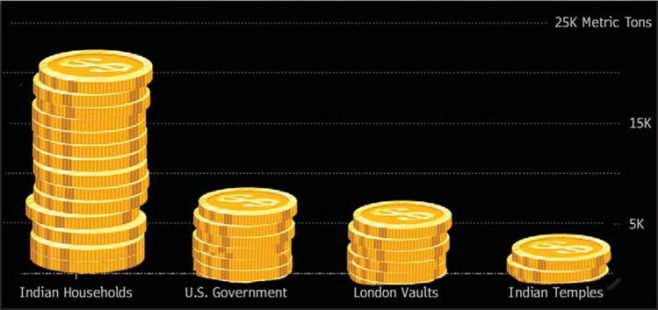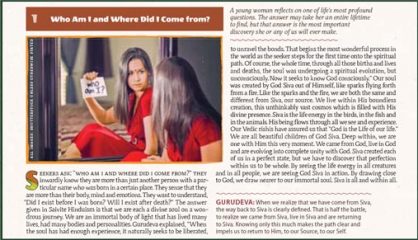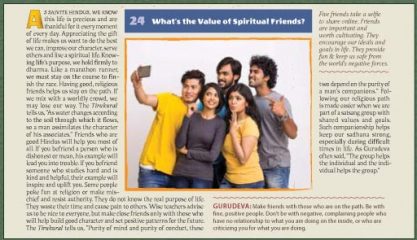Questioner: How are we to treat others?
Ramana Maharishi: There are no others.
Ramana Maharishi
The concept of shakti is indivisibly connected with Mother worship. Generally the worship of Durga, Kali, Sarasvati and other Goddesses is considered Shakti worship. But the worship of Narayana, Shiva, Ganesha and other Gods, too, is the worship of Shakti Herself. This is because in the use of all these there is a superimposition of the creation, preservation and destruction aspects of Shakti either fully or partially. Swami Prabhavananda (1893-1976), monk of the RK Mission
Many have died; you also will die. The drum of death is being beaten. The world has fallen in love with a dream. Only sayings of the wise will remain. Kabir, from the Bijak, 1440
The science which teaches arts and handicrafts is merely science for the gaining of a living; but the science which teaches deliverance from worldly existence, is not that the true science? Prajnadanda (The Staff of Wisdom), attributed to Nagarjuna, 150 bce
What is the purpose or goal of living? Getting rid of all limitations. Swami Advaitananda, resident Acharya of Chinmaya Mission
The highest truth cannot be put into words. Therefore the greatest teacher has nothing to say. He simply gives himself in service and never worries. Lao Tzu
Say not, “This poor man’s hunger is a heaven-sent doom.” To the well-fed, too, comes death in many forms. Yet the wealth of the generous giver never dwindles, while he who refuses to give will evoke no pity. Rig Veda 10.117.1, “In Praise of a Generous Giver”
Spirituality is not to be learned by flight from the world, or by running away from things, or by turning solitary. Rather, we must learn an inner solitude wherever or with whomsoever we may be. We must learn to penetrate things and find God there. Meister Eckhart (1260-1328), German philosopher
The tiller of the soil and the grocer in the shop of India may be uneducated and often wholly illiterate, but even they, while tilling the ground, driving a bullock cart or resting after the work of the day, will be singing songs full of mystical meaning, and for the moment transporting themselves to regions beyond the touch of material gains and comfort. Surendranath Dasgupta (1887-1952), scholar of Sanskrit and philosophy
Such is the all-round development of the human psyche offered by philosophy. It balances mystical intuiting by logical thinking, religious belief by critical reflection, idealistic devotion by practical service. Paul Brunton (1898-1981), British mystic & author
Sivan is hiding in our mind like fire in firewood, like ghee drawn from good milk and the brilliance in a large gem. He will appear before us to grant His vision if we vigorously churn with the churning rope of love fixed to the stick of clear discernment. Saint Appar, 7th century, Tirumurai 5.90
Foreign should not be defined in geographical terms. Then it would have no meaning except territorial or tribal patriotism. To me that alone is foreign which is foreign to truth, foreign to atman. Ram Swarup (1920-1998), avant garde Hindu thinker and author
The challenge with moksha is to make life’s ultimate spiritual attainment relevant to day-to-day family life. While the destination may be distant, the journey toward it is already happening, whether we recognize it or not. Satguru Bodhinatha Veylanswami, publisher of Hinduism Today


As a thermometer reacts to heat and cold, so does the kundalini when tampered with by the novice under the guidance of commercialization. Satguru Sivaya Subramuniyaswami (1927-2001), founder of Hinduism Today
DID YOU KNOW?
India’s Gold Rush
A CHART RELEASED IN 2017 FROM THE London Bullion Market Association revealed that Indian homes contain almost $1 trillion worth of gold, roughly $1,000 for every man, woman and child in the country. This is more than the next two largest deposits combined: the U.S. government repository and all of the bullion in London. According to the World Gold Council, India is the second largest jewelry market in the world with 40% of the country’s demand coming from the South. For the last seven years, India’s gold consumption has been consistent. Researchers report that 79% of consumers believe gold will never lose its value in the long term.


BLOOMBERG
Gold is deeply rooted in Indian culture, with purchases driven by tradition, festivals and other important family and societal occasions. In a 2014 ice360.in survey, the two most important motives for buying gold were gifting (46%) and a child’s future wedding (27%). A TNS consumer research study in 2016 identified weddings (24%), birthdays (15%) and religious festivals (12%) as being the top three purchase occasions in India. It should come as no surprise, therefore, that between 40 and 50 percent of gold purchases in India—in jewelry or bars and coins—are for marriages, and that gold jewelry demand tends to peak in the run up to marriage season.
Global research agency Kadence reports from a 2013-14 study: when offered Rs50,000 for a discretionary purchase, 42% of consumers over the age of 34 in urban India said they would buy gold jewelry. This dropped to 33% for millennials between 18 and 33. The comparable figure for US millennials is just 6 percent .
BASICS
What Is Vira Saivism?
From Sivaya Subramuniyaswami’s Dancing with Siva
VIRA SAIVISM IS ONE OF THE MOST dynamic of modern-day Saivite schools. It was made popular by the remarkable South Indian brahmin Sri Basavanna (1105-1167). Adherents trace the roots of their faith back to the ®ishis of ancient times. Vira, “heroic,” Saivites are also known as Lingayats, “bearers of the Linga.”
All members are to constantly wear a Linga encased in a pendant around the neck. Of this practice, Thavathiru Santalinga Ramasamy of Coimbatore said, “I can say that Vira Saiva worship is the best form of worship because Sivalinga is worn on our body and it unites the soul with the Omnipresence. We are always in touch with Lord Siva, without even a few seconds break.” Followers are also called Lingavantas and Sivasara∫as.
In the centuries following the sect’s reform, Vira Saivism gradually reabsorbed much of what Basavanna had rejected. Thus emerged temple worship, certain traditions of ritual purity, giving gifts to gurus, and the stratification of society, headed up by two large hierarchical orders of jangamas—resulting in the institutionalization of the crucial guru-disciple relationship, which by Vira Saiva precept should be very personal. Vira Saivites generally regard their faith as a distinct and independent religion. Vira Saiva saint Renukacharya said, “Like water placed in water, fire in fire, the soul that becomes mingled in the Supreme Brahman is not seen as distinct.”


God in one’s palm: A devotee has offered rice to a miniscule Sivalinga in his hand while Nandi the bull, cast in the man’s ring, looks on devotedly.






Hardcover, ISBN 978-1-934145-72-2, $25.00
Also in popular e-book formats
Available at:
www.minimela.com
himalayanacademy.com/view/path-to-siva


Sixty-eight lessons based on Satguru Sivaya Subramuniyaswami’s Master Course Trilogy for passing our tradition on to the next generation, and the next…
Path to siva presents all of the important teachings of the Saivite religion. It is written with youth in mind, but is also ideal for anyone wanting a condensed version of Gurudeva’s 3,000-page Master Course. Each illustrated lesson is short—just one or two pages—but packed with information. Here our youth can find answers to questions about God, Lord Ganesha, Lord Murugan and the devas—how they can help us in our lives and how to contact them through temple worship and home puja. You will find clear explanations of karma, dharma and reincarnation, and how to use japa, meditation and affirmations to make your life better. You will learn the best ways to live in order to achieve your most important goals. The lessons include insights on home life, getting along with others, religious tolerance, vegetarianism and caring for the environment. They cover challenging philosophical areas, like death and dying, sin and evil. These short essays will provide a clear understanding of Hindu practices, beliefs and philosophy and give you a deep comprehension of life that few people have. The book was designed as a tool for teachers and for parents with youth, a focus text for exploring Hinduism together. Discussing one lesson a week can keep the family conversation going for more than a year.


